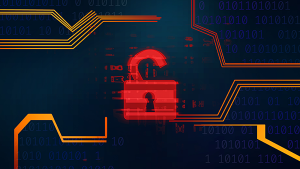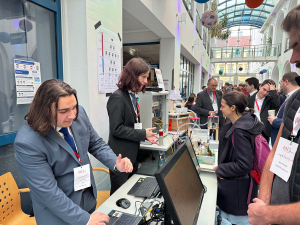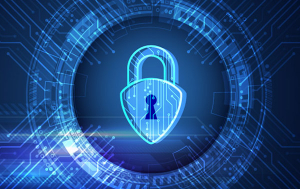 https://www.ikarussecurity.com/wp-content/uploads/2025/06/OWASP-Top-10.jpg
166
304
IKARUS
https://www.ikarussecurity.com/wp-content/uploads/2025/02/IKARUS-Security-Software-4-1.png
IKARUS2025-06-18 14:37:552025-06-20 11:03:57OWASP Top 10 for LLMs: New Security Challenges due to AI
https://www.ikarussecurity.com/wp-content/uploads/2025/06/OWASP-Top-10.jpg
166
304
IKARUS
https://www.ikarussecurity.com/wp-content/uploads/2025/02/IKARUS-Security-Software-4-1.png
IKARUS2025-06-18 14:37:552025-06-20 11:03:57OWASP Top 10 for LLMs: New Security Challenges due to AITo remain undetected for as long as possible, cyber-attacks are often divided into phases and coordinated across multiple channels. It is therefore critical for organisations to comprehensively collect, consolidate and continuously monitor internal data sources to identify anomalies early and evaluate them in context.
An effective solution for detecting and responding to complex security incidents is a Security Information and Event Management (SIEM) system. SIEM solutions collect and aggregate log and event data from multiple sources to identify and track security incidents. This provides organisations with a comprehensive view of current activity in their IT environment, as well as a record of past events, so that patterns and threats can be identified and addressed at an early stage.
What is a SIEM?
SIEM systems combine data collection and aggregation, real-time analysis and correlation, alerting, forensics and incident investigation, data visualisation and reporting technologies to provide comprehensive security monitoring and analysis. They collect and aggregate log and event data from multiple sources, such as network devices, servers, applications and security solutions, and use this information to identify threats and security incidents at an early stage. By consolidating and analysing data centrally and in real time, a SIEM enables both the detection of current threats and the investigation of past events.
The goal is to correlate, analyse and enrich the collected data with context to provide security teams with the information they need. Managed SIEM services outsource the ongoing monitoring, management and analysis of security events, reducing the burden on internal IT teams.
The five key functions of a SIEM system
- Data aggregation: SIEM systems collect log data from multiple sources, including network systems, cloud services, operating systems, and applications and services. This aggregation provides a single view of as many events as possible across the enterprise infrastructure.
- Event analysis: Using rules and algorithms or artificial intelligence, the SIEM system analyses the collected data to identify suspicious activity. This may be in the form of anomalies, unexpected access patterns or specifically correlated events that indicate a security incident.
- Alerting: When a potential security incident is detected, the SIEM system generates alerts with specific information about the incident. This helps the security team respond quickly, investigate the incident and take appropriate action.
- Forensics and Analysis: In the event of a security incident, the SIEM system can help identify the sequence and cause of the incident and provide historical analysis and containment of the affected systems and data. This is critical for assessing the incident and developing strategies to prevent similar incidents in the future.
- Reporting: Dashboards and reports provide an overview of the organisation’s security posture, making it easier to identify trends, patterns and potential vulnerabilities. In addition to ongoing monitoring, the long-term impact of security incidents can be documented.
Bonus features of SIEM systems
Threat Intelligence Integration: SIEM tools can be enriched with additional information from threat intelligence feeds to provide relevant knowledge about current forms of cyber-attacks, malware and threats. Incoming data can be matched against current threat indicators such as malicious IP addresses or suspicious domains.
Compliance Management: Many SIEM solutions support companies in meeting regulatory requirements by generating audit reports and documenting security-related events to fulfil compliance requirements.
Benefits of SIEM systems
There are many benefits to collecting, monitoring and analysing data centrally:
- Comprehensive transparency: The centralised data view provides an overview of the entire IT environment and potential vulnerabilities.
- Early threat detection: By intelligently correlating even the smallest anomalies, organisations can identify potential threats at an early stage.
- Faster response times: Automated alerting and incident investigation enables rapid and targeted response to threats and security incidents. Real-time responses can prevent or minimise further damage.
- Compliance: A centralised database, detailed reports and log storage also make it easy to meet and track compliance requirements.
- Efficiency and reduced workload: Processes for automating security monitoring and analysis are easier to implement.
- Decision support: Visualisation and reporting enable security teams to make informed decisions and take strategic action.
Challenges of SIEM systems
SIEM systems offer many advantages, but also come with some disadvantages and challenges.
- Cost: Purchasing, implementing and maintaining a SIEM system can be complex and expensive, especially for small and medium-sized enterprises.
- Complexity of implementation: Setting up a SIEM typically requires detailed planning and customisation to the specific IT environment, which can be time-consuming and resource-intensive. Misconfigurations can result in ineffective alerts and missed threats.
- Resources: SIEM systems require significant computing and storage resources to manage and operate effectively, especially when processing large amounts of data and storing logs for long periods of time.
- Staff capacity and expertise: Operating a SIEM requires specialised experts to analyse and interpret threats. Managed services can help.
- Flood of reports: The volume of data collected can be overwhelming. Organisations must ensure that their SIEM systems are configured and operated to process only relevant information to avoid false positives and generate meaningful results.
- Maintenance: Regular adjustments and updates are required to address new threats and changes in the IT environment. Without careful configuration and fine-tuning, SIEM systems can generate a high number of false positives.
Conclusion
When integrated and used correctly, SIEM systems can be effective in helping organisations understand and improve their security posture and detect and manage incidents more quickly. However, before planning, organisations should consider whether they have sufficient resources and a long-term strategy for maintaining and improving the system.
A SIEM can be particularly worthwhile for organisations that are subject to extensive security requirements or already have an experienced security team. With careful planning, a SIEM can significantly strengthen an organisation’s security strategy and reduce the risk of costly security incidents.
This might also interest you:
EDR: Why anti-virus is no longer enough
Incident response planning: step-by-step emergency plan
Effective integration of threat intelligence with cyber defence

















